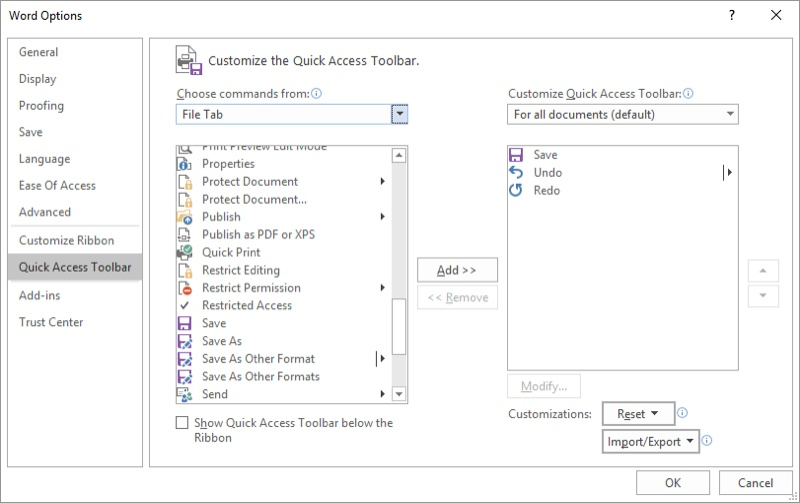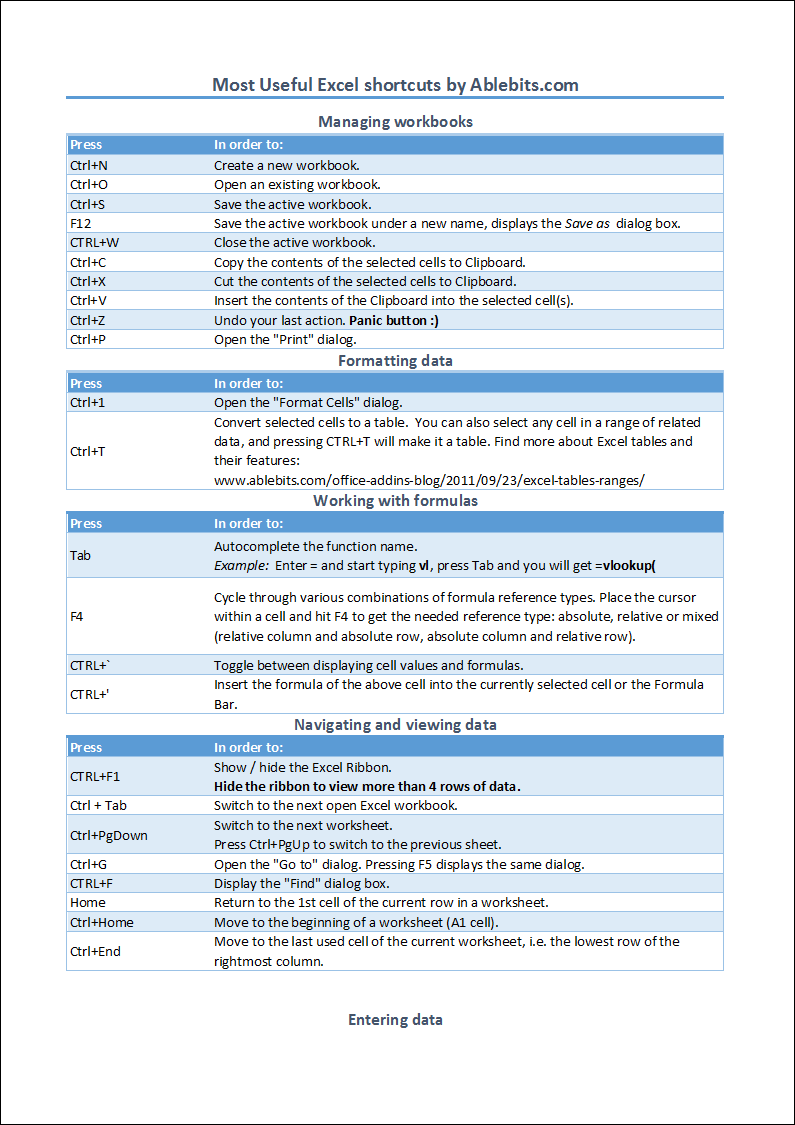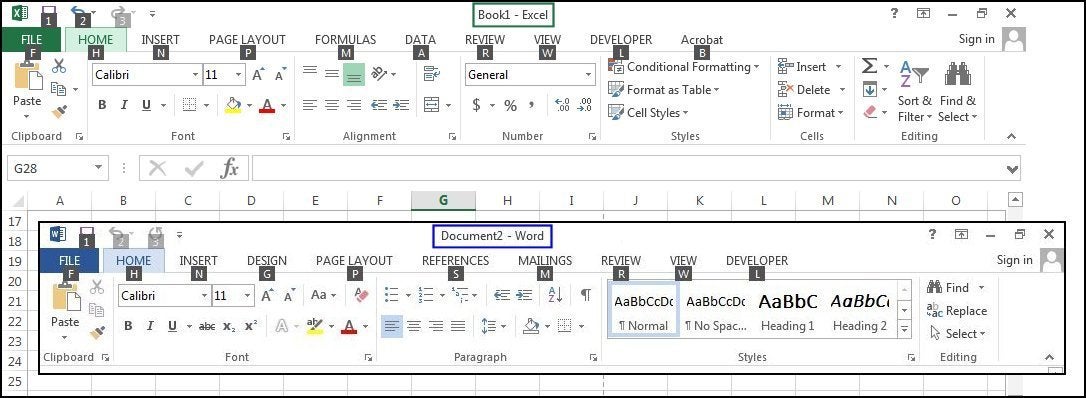- Microsoft Excel 2016 Keyboard Shortcuts
- Excel Shortcuts For Mac Pdf
- Microsoft Excel Keyboard Shortcuts Pdf
- Keyboard Shortcut For Excel Drop Down Menu
- Keyboard Shortcut For Drop Down Box Excel 2016 Mac Torrent
In this post we’re going to learn how to create a conditional drop down list in a cell. This means the drop down list will depend on some other value in the workbook and the available values in the drop down menu will change depending on this value. For example, we might want a user to be able to select from a film genre from a drop down list, then based on this we might want them to be able to select a film within that genre.
To do this we will need to set up a few items in our workbook.
Steps to Create a Drop-Down List in MS Excel 2016: Step 1: In the image below you can see that I have prepared an Excel sheet which contains Sr no., Name and City columns. Now I want to create a drop-down list for the City column. Sep 17, 2016 Steps to Create a Drop-Down List in MS Excel 2016: Step 1: In the image below you can see that I have prepared an Excel sheet which contains Sr no., Name and City columns. Now I want to create a drop-down list for the City column.
- A cell for our genre selection
- A range for our list of genres
- Ranges for each list of films within each genre
We are going to let the user select from these three genres: Drama, Comedy and Horror.
- Select the first range containing the film genre list
- Change the name to “Genre”
- Repeat for the other three ranges containing the film titles and name them “Drama”, “Comedy” and “Horror” respectively.
- Select the cell where you’re going to select the genre.
- Go to the “Data” tab in the ribbon.
- Select “Data Validation” in the “Data Tools” section.
- Under “Allow” Select “List”.
- In the “Source” input type “=Genre”. This means your drop down list will now contain the values in the range you called “Type”.
- Click on ok.
- Now select the cell where you’re going to select the movie title.
- Go to the “Data” tab in the ribbon.
- Select “Data Validation” in the “Data Tools” section.
- Under “Allow” Select “List”.
- In the “Source” input type “=indirect($B$1)”, where $B$1 is the name of the cell with the movie genre input.
- Click on ok.
Now when you select a genre, the drop down list for the title selection will change depending on the genre. Fancy!
A question I hear a lot is: how can I create a drop down list in my Excel workbook?
And I understand why you want to know.
Some spreadsheets in Excel are meant to be tightly controlled.
Maybe you just want your data to be clean and consistent. Some fields that you use in your data should only have specific values.
Or maybe your Excel file is used as a template or form, like a document for your team to start on a new project.
The good news is: Excel can easily help you do this.
In this post you’ll find out how to create this drop down menu in Excel, and you’ll get three different ways to set it up, depending on your needs.
If you want to skip to the option that’s right for you, here’s the summary:
Post Contents
The Summary
- Drop down list method #1 is the quickest way, but not very good for long-term Excel files.
- Method #2 is a little more stable and allows you to consistently edit the drop down menu items without breaking anything.
- Method #3 requires you to create an Excel Table, but is perfect for creating a foolproof drop down Excel menu that can handle anything you throw at it.
What the Excel drop down menu looks like
Here’s an example of what you might want to set up in your Excel workbook:
The company you work at might have a Finance or HR form which looks similar to the above. These kinds of forms need to be filled out in a certain way, so it’s helpful to limit values so that Bob in Accounts knows exactly which budget line to allocate the Christmas Party funds to.
This is just a simple example that might be used in an office environment, and we’ll go through this example throughout this post.
And before we get into the specific points of each method, read on to find out about the Data Validation feature which is a key part of setting up a drop down menu in Excel.
Introducing the Data Validation menu
You can’t create a drop down list in Excel without using the Data Validation feature.
Think of Data Validation is a restriction or limitation that Excel applies to the cells you specify.
You can choose the criteria, of course. You can force cells to be integers, dates, or values from a specific list (which is what you’ll be using for creating these menus) and a few other options.
The Data Validation menu is in the Data tab in the Excel Ribbon:
And here’s what the menu looks like:
In each of the three methods below, you will use this feature to choose the items in our menu.
Excel Drop Down List Method #1 (quickest): Enter Your Menu Options Manually
OK, enough of the introduction – let’s create a drop down menu in Excel!
If you have a fixed list of values that you want to choose from, you can enter them manually into the “Source:” box when you change the Validation options. There are some dangers with this option (and the other methods will work around these risks) but it is easily the fastest way to implement a drop down menu.
Pros
- Very quick to set up
Cons
- Difficult to keep consistent if you need to change your list of dropdown menu items
Process
Here’s the quickest way to set up a drop down menu in Excel:
- In your Excel workbook, select the cells that you want to apply the drop down menu to.
- Click on the Data Validation menu (in the Data tab in the Excel Ribbon), or use the shortcut Alt-A-V-V.
- In the “Allow:” dropdown menu, select “List”.
- In the “Source:” box, enter in your values separated by commas.
- Click OK to save the Data Validation options. Your cells will now have a menu when they are selected in Excel.
That’s it! You have now created a drop down menu for the cells you selected. You’ll only be able to enter values that are in the list you specified – and you can still type directly into the cell if you want.
Excel Drop Down List Method #2: Refer to a Data Range
What if you want to update your menu items later? If one of the departments in your company has a name change, then you would have to select all of the cells that use the drop down menu, and manually update the details.
(Although, if your dropdown menu is limited to only one cell, it’s not so bad…)
This alternate method involves entering the data somewhere else in your Excel workbook, and referring to that data range in the Data Validation settings.
Pros

- You can update values easily and the menu will always refer to the new names
Cons
- Slightly more time-consuming than entering the values into the Data Validation options
- If you want to add extra items to the list, you will need to update the Data Validation list formula to cover the new cells
Process
- Create the list of values you want to select from somewhere in your Excel workbook. If you don’t want people to edit the list, you can hide this sheet later.
- Select the cells that you want to use the list, and go to the Data Validation option (in the Data tab).
- In the Settings screen, select List from the “Allow:” box.
- In the “Source:” box, select the range of cells that contain your list.
- Depending on your requirements, you can allow blank values, and you can choose to hide the in-cell dropdown menu.
- (optional) Use the options in the Input Message tab if you want a message to appear when the cell is selected.
- (optional) In the Error Alert tab, enter an error message for whenever an incorrect value is selected.
Benefits
It should seem fairly obvious why it’s helpful to refer to a data range instead of the original values.
Let’s change one of the department names:
And here’s what the menu looks like:
Excel Drop Down List Method #3 (best): Use an Excel Table to Future-proof your List
Of course, I’ve saved the best option for last.
Mac os x internet manager. The second option is good, but what if you need to easily add additional menu items?
Let’s try adding a new option to the list, by adding an extra department at the bottom of the data range.
But if we test out the drop down menu, it won’t be there because the data range is $A$1:$A$5. It won’t pick up any additional items.
What’s the solution?
Your Excel drop down list can be automatically updated if you use an Excel Table to store your menu items.
If you haven’t used Excel tables before, they are a distinct object in your Excel workbook that can be given a name. That name can be referred to throughout your work.
And a huge benefit of tables is that they will automatically expand when extra data is added to them.
Want to learn more about Excel Tables? Read about the 9 (+1) Benefits of Using an Excel Table here.
What does this mean for your drop down menu?
It means you can simply refer to a column within an Excel table, and the menu will automatically update based on the items in that list.
If you anticipate adding extra items to your drop down menu over time, then this method is the best long-term solution as it’s the “cleanest” way to refer to your list of menu items.
Pros
- Most elegant solution – you can add list items to the bottom of the table and the menu will automatically cover the new option
- Not substantially more complicated than the previous example
- Works well if you want to apply a VLOOKUP or INDEX/MATCH on your dropdown menu value to bring up a different value
Cons
- The formula to refer to a column in an Excel table is tricky if you haven’t used them before
- Takes longer to set up
Process

- Enter your drop down list items in your Excel workbook, preferably in a separate sheet (to avoid any accidental changes). Make sure you’ve entered a heading for your list.
- Select the data range you just entered (including the heading), and create an Excel Table by going to Insert > Table from the Excel Ribbon, or by using the shortcut Ctrl + T. Click OK when the dialog box appears.
- You’ll notice that the formatting of your data has been updated, and there is an outline around the data with a triangle on the bottom right. Also, whenever a cell inside the Table is selected, a new menu option (Table Tools) will appear in the Excel Ribbon.
- (optional) Rename the Table you have created by editing it in the Excel Ribbon (in the far left of the Table Tools menu). In this case, we’ll use “TableName” as our Table name.
- This is the slightly tricky bit. Select the cells that you want to use the drop down menu, select List from the “Allow:” menu and in the “Source:” box enter:
- Click OK to get out of the Data Validation options, and test your drop down menu.
Microsoft Excel 2016 Keyboard Shortcuts
Not happy with the default formatting of Excel Tables? Learn all the crucial formatting shortcuts in this Excel Shortcut Roundup.
Benefits

I bet you’re thinking: why do I need to bother with a formula like that? The other options were so simple in comparison!
Well you’re right, but let’s add some extra items to our Table by entering data immediately underneath it:
Now the Excel Table has expanded to include the new menu item.
And since your Data Validation is referring to the entire column within the table, you can add as many items as you want and they will automatically be included in the drop down menu!
Even better, you can move the Table around your workbook and it’ll still be referenced correctly.
Even more benefits!
Of course, the Excel Table doesn’t have to have a single column. You can edit the cells to the right and create additional columns that will automatically become part of the table:
Excel Shortcuts For Mac Pdf
And then you can leverage this information in a VLOOKUP or INDEX/MATCH formula:
For more references on using Tables in Excel formulas, try this helpful article/video from Chandoo, or this helpful explanation from Excel Campus.
Microsoft Excel Keyboard Shortcuts Pdf
If you want to make a drop down list dependent on another list, try this article from Excel by Joe.
Conclusion
Keyboard Shortcut For Excel Drop Down Menu
So there you have it – three different methods to create a drop down list in Excel.
Each have their own benefits and drawbacks, so you’ll find that you might use different options for different scenarios.
Keyboard Shortcut For Drop Down Box Excel 2016 Mac Torrent
What do you use drop down menus for, and which of the above methods did you use?
